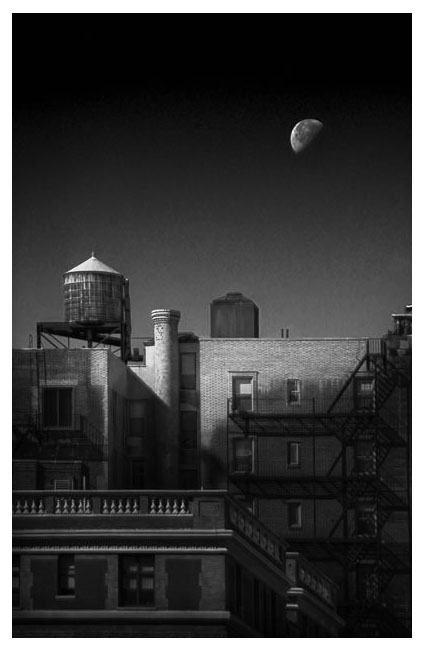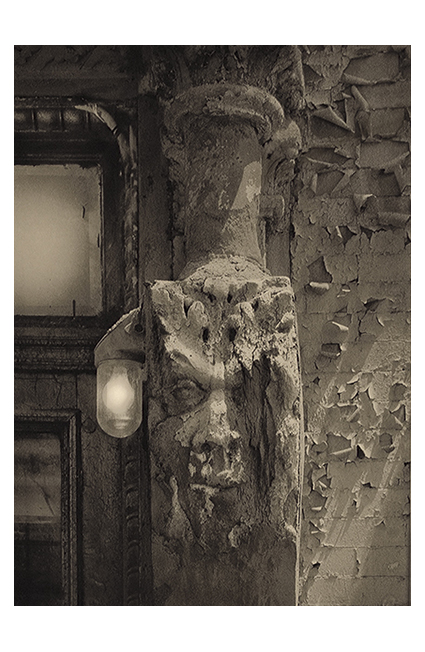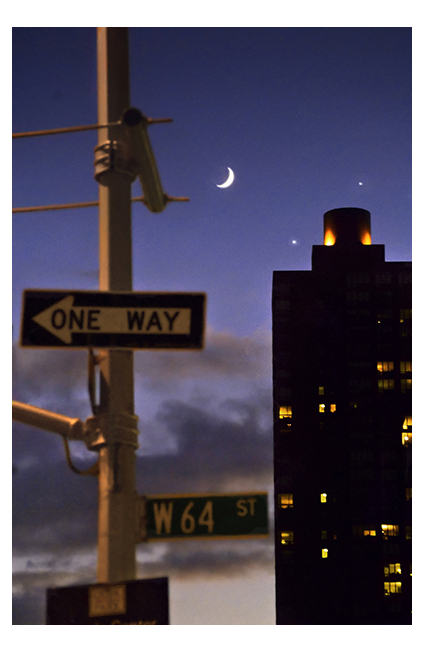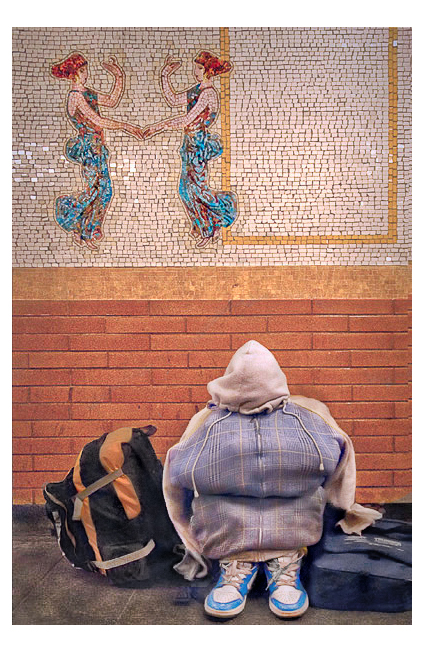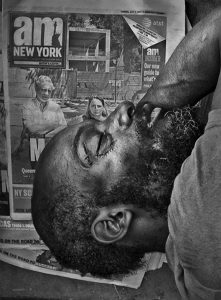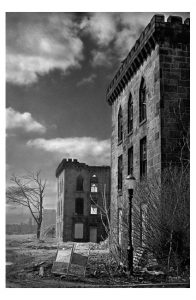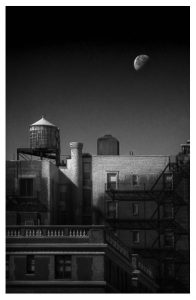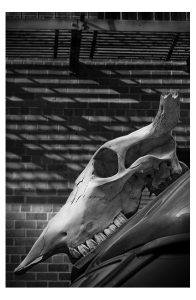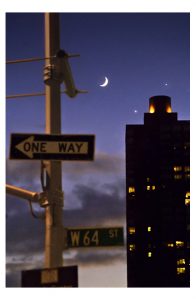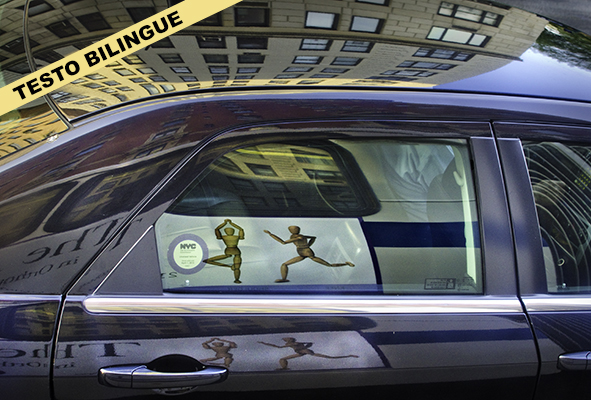
Gerald Feldman: Seasoned NYC street photographer and the ‘science’ of his style / Gerald Feldman: un veterano della fotografia di strada newyorkese e la ‘tecnica’ dietro al suo stile
an interview by / intervista di Phillipa Guest (the translation into Italian at the bottom of the page)
photo gallery by / galleria fotografica a cura di Lucia Mazzilli (all photos by © Gerald Feldman / tutte le foto di © Gerald Feldman)
Gerald Feldman was born in Brooklyn, NY. In his teens he was introduced to photography as a course requirement while an advertising art major at Manhattan’s High School of Art and Design. Soon the thrill of capturing the human pulse and geometric rhythms of the city eclipsed all interest in the required curriculum. Mornings, arriving at the 59th St. and Lexington subway station for school he’d ditch his art portfolio (where at day’s end it could be retrieved in a dark corner of Bloomingdale’s basement) and roam the city with his camera. Throughout his junior and senior years, only summer school repetition ensured his promotion and graduation.
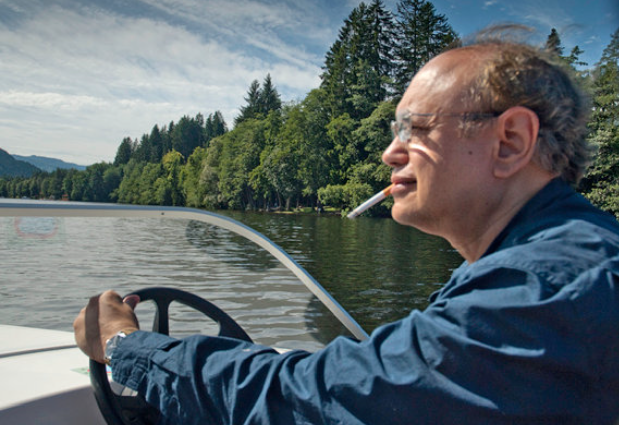
Feldman has exhibited in group shows in such New York City galleries as The Cork Gallery at Lincoln Center, The Treasure Room, and the Tribes Gallery. His one-person shows include Ordinary Places at O.K. Harris Works of Art (2010), Concrete and Soil at The Treasure Room (2011), and Ordinary Faces, also at O.K. Harris, scheduled for 2014.
When and how did you learn you had a special gift for photography?
Gerald Feldman: «When I was sophomore in high school I had a course in photography for which I needed a camera, My father bought me a good Japanese Rollei clone. I enjoyed photography so much that I began roaming around the city (Manhattan) taking photos instead of going to class. By my senior year I won an honorable mention in a citywide photography contest. Award prizes were given to winners by Miss New York State and an enlargement of my photo was exhibited at the Times Square New York Convention and Visitors Bureau».
Are there any iconic figures who have influenced your work… if so who and briefly, why?
G. F.: «Ansel Adams because he was a master of the epic qualities of darkness and light (I have tried to incorporate some of his compositional ideas into my NYC street scenes). Cartier-Bresson because he was a master of spontaneity, irony and the surreal. Robert Capa because he was the bravest war photographer of his time: “If your pictures aren’t good enough, you weren’t close enough”. And because he had an affair with Ingrid Bergman…».
How would you describe your unique style?
G. F.: «I would call my style ‘nomadic’ I roam from place to place until I find a good subject. If something is off – lighting, time of day, etc. – I keep returning until all the elements come together».
Is your body of work documented anywhere? If so where and how did that come to be?
G. F.: «Yes, at the Smithsonian, where the data of my show Ordinary Places at O.K. Harris Works of Art – CD disk of photos and paperwork – are in a folder among the iconic Soho gallery’s archives. They were donated to the Institute after the gallery’s 2014 closing as a result of its founder’s, Ivan Karp’s, death».
What other interests do you pursue?
G. F.: «I am an avid reader, sometime writer, and film buff».
Lastly, what do you look for when composing a shot?
G. F.: «I usually look for contrasts between foreground and background (which includes irony and the absurd), harmonies, interesting lighting (usually dramatic), Meaningful content, though, always takes presidence over formal composition».
His work in his own words
I continue to roam and explore. With my camera I strive to capture without censure or restraint the products of this peripatetic project. This has been buttressed and enlarged over the years by a growing interest in psychoanalysis and the many analogies between dream dynamics and photographic processes. Arresting time, each are products of visual perception in which the residues of the day reveal both a latent (dream thoughts/photographic negative or raw digital capture) and manifest content (the manifest dream or final photographic print), whose purpose is to create a compromise – displaced, distorted and condensed – in which a wish of the past, at odds with the present, finds its fulfillment in the future (Gerald Feldman).
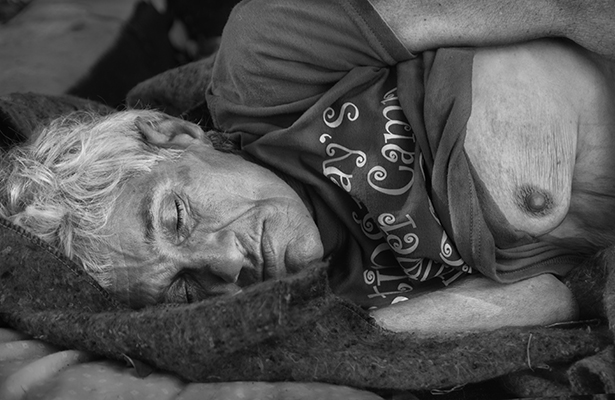
Traduzione in italiano
di Simona Maria Frigerio
Gerald Feldman è nato a Brooklyn, New York. Ancora adolescente ha appreso a fotografare seguendo un corso obbligatorio mentre era studente d’arte e pubblicità presso la Manhattan’s High School of Art and Design. Ben presto l’emozione di registrare il battito umano e cogliere i ritmi geometrici della città ha eclissato ogni interesse per le materie curriculari. La mattina, appena arrivato alla fermata della metropolitana tra la 59ª Strada e Lexington per andare a scuola, mollava il suo portfolio d’arte (che avrebbe recuperato al termine della giornata in qualche angolo sperduto del seminterrato di Bloomingdale [catena di grandi magazzini statunitensi, n.d.t.]) e iniziava a vagabondare per la città con la sua macchina fotografica. Durante gli anni delle superiori, solo le ripetizioni della scuola estiva gli hanno consentito di essere promosso e diplomarsi.
Feldman ha esposto in collettive in varie Gallerie newyorkesi, quali The Cork al Lincoln Center, The Treasure Room, e The Tribes. Tra le sue personali, ricordiamo Ordinary Places all’O.K. Harris Works of Art (nel 2010), Concrete and Soil a The Treasure Room (nel 2011), e Ordinary Faces, sempre presso l’O.K. Harris, programmata nel 2014.
Quando e come hai capito di avere un talento speciale per la fotografia?
Gerald Feldman: «Quando ero in seconda superiore frequentai un corso di fotografia per il quale avevo bisogno di una macchina fotografica. Mio padre mi diede un buon clone giapponese della Rollei. Mi piacque talmente la fotografia che iniziai a vagabondare per Manhattan, scattando foto invece di andare a scuola. Prima della maturità mi ero già meritato una menzione in un concorso di fotografia cittadino. I premi erano consegnati ai vincitori da Miss New York State e un ingrandimento della mia foto venne esposto presso la Times Square New York Convention e il Visitors Bureau».
Esistono figure iconiche che hanno influenzato il tuo lavoro? Se sì, quali sono e, in breve, perché?
G. F.: «Ansel Adams perché era un maestro delle luci e delle ombre – qualità epiche. Io ho cercato di integrare alcune tra le sue idee compositive nelle mie inquadrature delle strade newyorkesi. Inoltre, Cartier-Bresson in quanto maestro di spontaneità, ironia e del surreale. E infine Robert Capa perché è stato il più coraggioso fotografo di guerra del suo tempo: “Se le tue foto non sono buone abbastanza, significa che non eri vicino abbastanza”. E poi aveva un affaire con Ingrid Bergman…».
Come descriveresti il tuo stile?
G. F.: «Lo definirei ‘nomade’. Io vagabondo da un posto all’altro finché non trovo un buon soggetto. Se penso che qualcosa non funzioni – la luce, l’ora del giorno, eccetera – continuo a tornare nel medesimo luogo finché tutti gli elementi si combinano».
Il corpus dei tuoi lavori è documentato? Se sì, dove e quando è accaduto?
G. F.: «Sì, presso lo Smithsonian [lo S. Institute è un istituto di istruzione e ricerca con annesso un importante museo. La sede principale è a Washington, n.d.t.]), dove le informazioni sulla mia mostra, intitolata Ordinary Places, ospitata all’O.K. Harris Works of Art (in CD, con le foto e la relativa documentazione) sono raccolte nell’archivio dedicato alle Gallerie storiche di Soho. Sono state donate allo Smithsonian dopo la chiusura del summenzionato spazio espositivo a causa della morte del suo fondatore, Ivan Karp».
Coltivi altri interessi?
G. F.: «Sono un avido lettore, un cinefilo e, a volte, scrivo.»
Cosa cerchi quando costruisci un’inquadratura?
G. F.: «Cerco il contrasto tra primo piano e sfondo (il che include senso dell’ironia e dell’assurdo), armonie, una luce interessante (solitamente, teatrale), un contenuto significativo, che presiede sempre alla composizione formale».
Il suo lavoro, nelle parole di Gerald Feldman
Continuo a vagabondare e a esplorare. Con la mia macchina fotografica mi sforzo di cogliere, senza censure o limiti, i prodotti di questo progetto girovago. Un progetto sostenuto, e che si è ampliato, negli anni grazie a un crescente interesse per la psicoanalisi e le molte analogie tra le dinamiche oniriche e i processi fotografici. Fermare il tempo: entrambi (sogni e foto) sono i prodotti della percezione visiva, nei quali i residui del giorno rivelano sia un contenuto latente (pensieri onirici/negativo fotografico o scatti digitali raw/grezzi) sia uno manifesto (il sogno manifesto o la stampa finale della foto), e il cui obiettivo è raggiungere un compromesso – ‘spostato’, distorto e condensato – nel quale un desiderio del passato, in conflitto col presente, trova la sua realizzazione nel futuro (Gerald Feldman).
NYC as you’ve never seen it thanks to / New York come non l’avete mai vista, grazie agli scatti di Gerald Feldman.
Friday, October 15, 2021 / Venerdì, 15 ottobre 2021
On the cover and in the photo gallery: photos by © Gerald Feldman. All rights reserved, total or partial reproduction prohibited / Sulla copertina e nella galleria fotografica: foto di © Gerald Feldman. Tutti i diritti riservati, vietata la riproduzione totale o parziale




